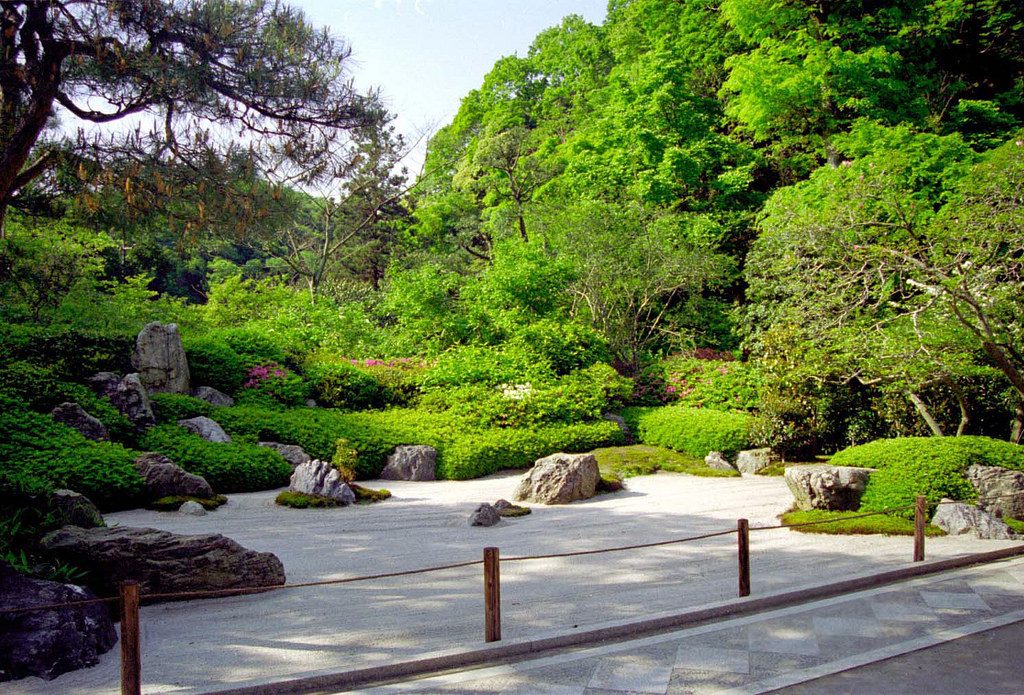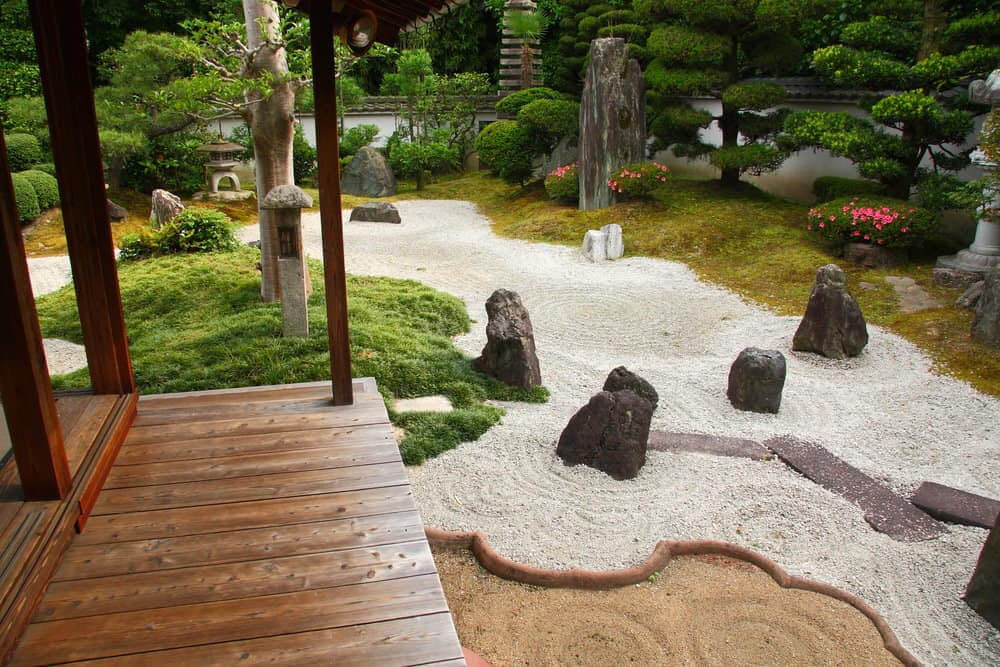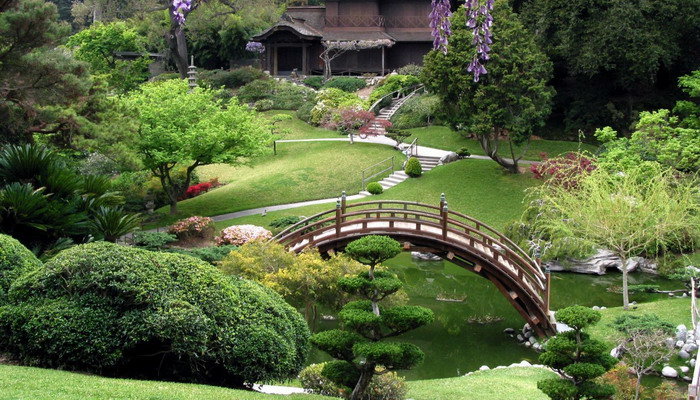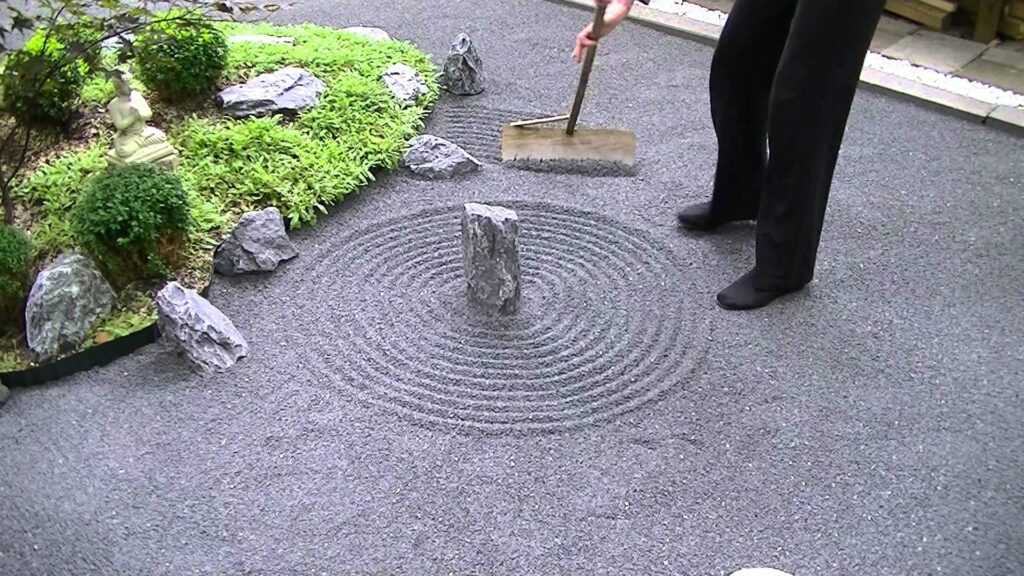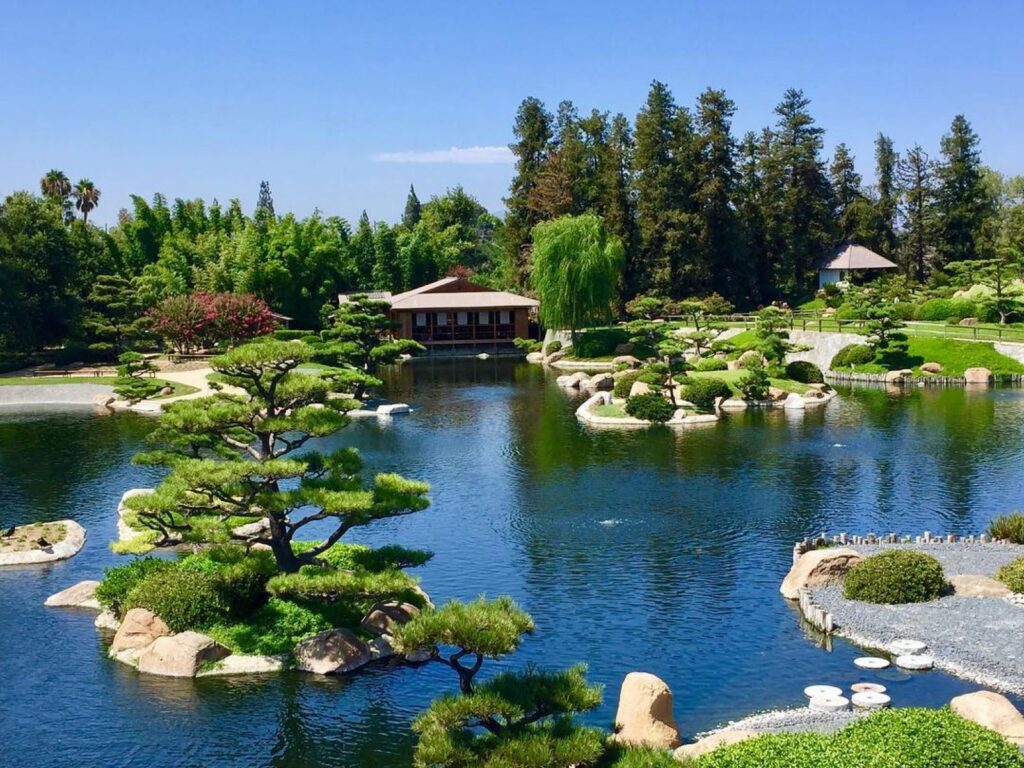A meditation garden, in its serene beauty and purposeful design, stands as a testament to the harmonious intersection of nature and mindful contemplation. This tranquil space, whether nestled amidst bustling cityscapes or in the quietude of a rural setting, provides a sanctuary from the stresses of everyday life.
It’s more than just an assembly of plants and pathways; it is a carefully curated environment designed to stimulate the senses, encourage introspection, and foster a deep sense of peace.
What is a Meditation Garden?
A meditation garden is a serene, designed outdoor space that facilitates relaxation, contemplation, and meditation. Unlike regular gardens, every element in a meditation garden is intentional, aiming to engage the senses and promote a state of peace and mindfulness.
These gardens are sanctuaries where the hustle and bustle of everyday life fades into the background, allowing individuals to connect with nature and find inner calm.
Typically, a meditation garden features elements such as calming water features, like fountains or ponds, which provide soothing sounds and a sense of tranquility. Plants are chosen for their sensory appeal and symbolism, with fragrant flowers, rustling grasses, and lush greenery creating a multisensory experience. Paths in the garden invite leisurely walks, fostering slow, mindful movement that can aid in meditation.
Seating areas, often secluded, offer spaces for stillness and reflection. The design usually incorporates natural materials like stone and wood, enhancing the garden’s connection to the earth. The layout is typically simple and uncluttered, avoiding overstimulation and fostering a sense of spaciousness and peace.
Meditation gardens can be found in private homes, retreat centers, hospitals, and even within corporate environments, reflecting a growing recognition of the importance of mindful relaxation and its benefits for mental health.
The Difference Between a Meditation Garden and a Regular Garden
The primary difference between a meditation garden and a regular garden lies in their fundamental purposes and design principles. While both can feature elements such as plants, pathways, and water features, the intentions behind their creation and use are different.
A regular garden, often referred to as a traditional or recreational garden, primarily serves an aesthetic function, beautifying the landscape, and may also have a practical purpose such as growing vegetables, fruits, or other plants. The design of a regular garden can be varied, depending on the gardener’s preferences, and might focus on showcasing a diverse array of plant species, creating color combinations, or attracting wildlife.
In contrast, a meditation garden is intentionally designed as a space for calm, reflection, and spiritual or mental rejuvenation. Its design is guided by principles of simplicity, balance and naturalness. The goal is to create an environment conducive to mindfulness, relaxation and inner peace. As such, the choice and arrangement of elements in a meditation garden often have symbolic or philosophical implications.
For instance, in a meditation garden, you might find fewer plant varieties, selected more for their sensory qualities – such as texture, color, and fragrance – than their ornamental value. The placement of each element, whether it’s a rock, a water feature, or a seating area, is done thoughtfully, often adhering to principles from Zen or other philosophical or religious traditions.
Moreover, meditation gardens often incorporate elements that encourage contemplation and mindfulness, such as meandering pathways, tranquil water features, and secluded seating areas. The sounds in a meditation garden – perhaps rustling leaves or gently flowing water – are also considered, contributing to the overall calming and restorative ambiance.
Regular maintenance of a meditation garden also involves a level of mindfulness, keeping the garden tidy and serene, often involving practices such as careful pruning, raking gravel into patterns, or mindfully cleaning a water feature.
Some Essential Elements for a Meditation Garden
A meditation garden as an oasis of tranquility and reflection, involves several key components that come together to create an atmosphere conducive to mindfulness and peace. Here are the essential elements that typically form the foundation of a meditation garden:
- Natural elements: Integral to every meditation garden is the incorporation of the natural world. This may include a variety of flora, such as trees, shrubs, and flowers, chosen not only for their aesthetic value but also for their sensory contribution, such as fragrance or texture. Water features, such as fountains, waterfalls, or ponds, are common, offering a soothing soundtrack that promotes tranquility. Stones, whether used in pathways or as decorative elements, can provide texture and contrast.
- Pathways: The journey through a meditation garden is as significant as the destination. Pathways, often constructed from stepping stones or gravel, guide visitors through the space, encouraging slow, contemplative movement. The design of these pathways should reflect the overall spirit of the garden, whether that involves winding, organic paths or straight, Zen-inspired walkways.
- Seating areas: Spaces for relaxation and contemplation are crucial in a meditation garden. This may be in the form of benches, a pavilion, or simple meditation cushions. These spots provide places for stillness, reflection, or meditation.
- Structures: While not mandatory, structural elements like pergolas, gazebos, or teahouses can add depth and focus to a meditation garden. These elements can provide shelter, frame views, and serve as an architectural counterpoint to the organic elements of the garden.
- Sensory stimulation: A well-designed meditation garden caters to all the senses. The sight of carefully arranged plants and structures, the sound of rustling leaves or flowing water, the smell of fragrant flowers, the texture of stones or bark, even the taste of edible plants – each can contribute to a multi-sensory experience that encourages mindfulness.
- Symbols and Artwork: Many meditation gardens incorporate symbolic elements that evoke introspection and tranquility. This may include statues, often of Buddha or other spiritual figures, intricately raked sand or gravel, or carefully pruned trees and shrubs. These features can serve as visual focal points for meditation or reflection.
- Privacy: For many, the sense of seclusion is vital in a meditation garden. Privacy can be created through the strategic use of plants, walls, or fences, allowing the garden to become a personal sanctuary.
- Lighting: The consideration of natural light, and possibly the addition of artificial lighting for nighttime use, is essential. The play of light and shadow can significantly influence the atmosphere of the garden.
However, you have to remember that a meditation garden is a personal space and should reflect the individual’s own path towards mindfulness and tranquility. There are no strict rules; rather, these elements serve as guidance in the creation of a unique, peaceful sanctuary.
Plants are Suitable for a Meditation Garden
When choosing plants for a meditation garden, the aim is to select varieties that enhance the garden’s peaceful ambiance without demanding excessive attention or maintenance. The plants should appeal to the senses, evoke tranquility, and harmonize with the garden’s overall theme. Here are some plants that are particularly suited to a meditation garden:
- Bamboo: Bamboo plants are often associated with Asian gardens and specifically Zen gardens due to their prominence in these designs. They can serve as a natural fence, provide shade, and add to the calming ambiance with the rustling sounds of their leaves.
- Moss: Moss is another traditional component of many Japanese Zen gardens. It provides a vibrant green carpet that is soft to the touch and pleasing to the eye. Additionally, moss requires little maintenance and is resilient in various conditions.
- Japanese maples: With their intricate shapes and brilliant autumn colors, Japanese maples (Acer palmatum) can serve as a beautiful focal point in a meditation garden. These trees are appreciated for their slow growth and graceful forms.
- Ferns: Ferns can provide a lush, calming backdrop to a meditation garden. Their soft, feathery leaves add texture and can help create a sense of seclusion or privacy.
- Lavender: Known for its calming scent, lavender (Lavandula) is a wonderful addition to a meditation garden. Its striking purple flowers add color, and its fragrance can enhance the meditative experience.
- Hostas: Hostas are shade-tolerant perennials that can add visual interest with their broad leaves and various colors. They’re relatively low-maintenance and can help create a sense of tranquility.
- Ornamental grasses: Ornamental grasses like fountain grass (Pennisetum) or Japanese forest grass (Hakonechloa) provide texture and movement. They can also create soothing rustling sounds when the wind blows.
- Flowering shrubs and vines: Plants like gardenias, jasmine, or climbing roses can offer pleasant scents and beautiful blossoms. They also add to the multisensory experience of the garden.
- Water plants: If your meditation garden includes a water feature, consider adding water lilies, lotus, or other aquatic plants. These plants not only enhance the beauty of ponds or water features but also contribute to a healthier aquatic environment.
The selection of plants for a meditation garden should reflect the overall design and purpose of the garden, the local climate and soil conditions, as well as the gardener’s personal preferences. If you combine these plants correctly, you can create a rich, peaceful, and inviting environment that promotes relaxation and mindfulness.
Benefits of Having a Meditation Garden
A meditation garden offers multifaceted benefits, acting as a sanctuary for stress reduction, mental health improvement, mindfulness practice, physical health enhancement, connection with nature, and personal growth. While the actual effects can vary between individuals, the potential benefits are significant, making a meditation garden a valuable addition to one’s living environment.
1. Stress reduction: One of the primary benefits of a meditation garden is its potential to aid in stress reduction. The tranquil atmosphere, complemented by soothing elements such as the sound of flowing water or rustling leaves, can help individuals unwind and escape from daily stresses.
2. Improved mental health: Regular visits to a meditation garden can boost mental health. According to a variety of studies, spending time in nature, particularly in serene, green spaces, can decrease anxiety, improve mood, and enhance feelings of wellbeing. A meditation garden, with its serene and natural elements, can offer similar benefits.
3. Encourages mindfulness: A meditation garden provides an ideal space for practicing mindfulness, a state of active, open attention to the present. The design of the garden, often including pathways for contemplative walks or seating areas for meditation, facilitates focus on the present moment, fostering mindfulness and its associated benefits, such as improved focus and mental clarity.
4. Physical health benefits: While the meditation garden is primarily designed for mental and spiritual wellbeing, it can also positively affect physical health. Regular engagement in mindful movement or yoga in the garden can promote flexibility, strength and cardiovascular health. Further, studies suggest that exposure to green spaces can lower blood pressure and improve immune system function.
5. Enhances connection with nature: A meditation garden encourages an intimate connection with the natural world. Regular engagement with the garden – whether through meditative walks, caring for the plants, or simply spending time in the space – can foster a deeper appreciation for nature, its rhythms, and its many sensory offerings.
6. Promotes personal growth: Lastly, a meditation garden can be a powerful tool for personal growth. Through regular meditation or contemplation in the garden, individuals can gain insights, find inspiration, and cultivate qualities such as patience, gratitude and acceptance.
How to Create a Meditation Garden
Creating a meditation garden requires careful planning and thoughtful execution. The process involves not just horticultural skills, but also an understanding of zen aesthetics and philosophy. Here’s a step-by-step guide to help you create your own meditation garden:
- Choose the Right Location: Look for a spot in your yard that feels naturally peaceful, away from the noise and distractions of the outside world. It could be a secluded corner or an area that offers a pleasant view.
- Define Your Space: Consider the layout of your meditation garden. You might want to include a pathway that leads you through the garden, creating a sense of journey and exploration. Enclosing the space with natural elements like bushes, trees, or even a simple fence can enhance the feeling of seclusion and privacy.
- Select Soothing Plants: Opt for plants that evoke a sense of calm and are pleasing to your senses. Fragrant plants like lavender, jasmine, or rosemary can add a delightful scent, while the soft rustling of bamboo or grasses can provide soothing sounds. Choose plants that appeal to you and fit the climate of your area.
- Incorporate Water: The sound of flowing water can be incredibly calming. Consider adding a small fountain, a bird bath, or even a small pond. The reflective surface of water adds an element of depth and tranquility to your garden.
- Create a Focal Point: This could be a statue, a large rock, a tree, or any element that draws your focus and helps anchor your meditation practice. The focal point should be something you find inspiring or calming.
- Add Comfortable Seating: Whether it’s a bench, a cushion, or a simple mat, having a comfortable place to sit or kneel is crucial. This is where you’ll spend time meditating, breathing, and connecting with nature.
- Keep it Simple: The beauty of a meditation garden lies in its simplicity. Avoid cluttering the space with too many elements. The goal is to create a peaceful retreat where you can let go of life’s complexities.
- Personalize Your Space: Incorporate personal touches that enhance your meditation experience, such as wind chimes, inspirational stones, or personal artifacts that hold meaning for you.
- Maintain Your Garden: Regular maintenance not only keeps your garden looking beautiful but also becomes a mindful practice in itself. Tending to your plants and keeping the space tidy contributes to its serene atmosphere.
Remember, the process of creating a meditation garden is in itself a form of meditation. Take your time to enjoy each step, infusing the space with your intention and positive energy. Once completed, your meditation garden will offer a personal sanctuary where you can retreat, rejuvenate, and reconnect with your inner self.
You can refer to more about how to design a meditation garden: https://lotusbuddhas.com/how-to-design-a-meditation-garden.html
How to Maintain a Meditation Garden
Maintaining a meditation garden requires a blend of horticultural care and mindful upkeep of the space’s spiritual and aesthetic elements. But don’t worry, LotusBuddhas will share some tips for you to maintain a meditative garden that is always green and full of peaceful energy.
1. Regular pruning: To maintain the shape, health, and growth of plants, regular pruning is essential. This might include trimming back overgrown shrubs, deadheading flowers, or pruning trees. Each type of plant in your garden will have specific pruning needs, so it is crucial to understand these requirements.
2. Watering and feeding: Each plant will have its own watering and nutritional needs. Regularly check soil moisture levels and provide additional watering during dry spells. Use a suitable fertilizer for each plant type to ensure proper nutrient levels.
3. Raking and weeding: In a meditation garden, the ground areas, such as sand or gravel, often serve a symbolic purpose and should be kept neat. Regular raking, particularly in Zen gardens where sand or gravel is raked into patterns, helps maintain the garden’s visual appeal. Similarly, regular weeding will keep the garden looking tidy and prevent weeds from competing with your chosen plants for resources.
4. Cleaning water features: If your garden includes water features, these will need to be kept clean to prevent algae growth and ensure the water remains clear. This may involve periodically cleaning pumps or filters, treating the water, or removing debris.
5. Maintaining garden structures: Any structures, such as benches, arbors, or gazebos, should also be maintained. This may involve regular cleaning, treating wood to prevent rot, or repairing any damage.
6. Monitoring plant health: Regularly inspect plants for signs of disease or pest infestation. Early detection and treatment can prevent these problems from spreading and causing significant damage.
7. Seasonal care: Consider the changing needs of your garden with the seasons. This could involve protecting sensitive plants in winter, planting new specimens in spring, or ensuring adequate watering in summer.
8. Mindful upkeep: Beyond physical maintenance, a meditation garden benefits from mindful upkeep. This might involve regularly taking time to meditate or reflect in the garden, adjusting elements that no longer serve their purpose, or introducing new elements that enhance the garden’s tranquility.
Some Famous Meditation Gardens in The World
Meditation gardens around the world offer serene retreats that reflect the unique cultural, philosophical, and horticultural influences of their regions. Here are eight renowned meditation gardens that stand out for their beauty, tranquility and design:
- The Zen Garden of Ryoan-ji, Kyoto, Japan: Perhaps the most famous meditation garden in the world, the Zen garden at Ryoan-ji Temple is a pinnacle of simplicity and harmony. Comprising raked gravel and fifteen carefully placed rocks, it invites contemplation and introspection. The garden’s exacting design is a subject of interpretation and meditation, with visitors often pondering its minimalist approach to represent islands amidst an ocean.
- The Garden of Cosmic Speculation, Scotland, UK: This private garden is less traditional but no less meditative. Open to the public only one day a year, it blends natural landscapes, mathematical formulas, and scientific phenomena into an intriguing and thought-provoking space. Its design encourages deep reflection on the nature of the universe, making it a unique spot for meditation on a grand scale.
- The Self-Realization Fellowship Lake Shrine, California, USA: Nestled in Pacific Palisades near Los Angeles, this garden is a spiritual sanctuary open to people of all faiths. With its lush settings, a serene lake, and various meditation spots, including a hilltop windmill turned into a chapel, the Lake Shrine offers a peaceful retreat from the bustling city life.
- Daitoku-ji Temple Complex, Kyoto, Japan: This complex houses several sub-temples, each with its own Zen garden, offering various settings for meditation and reflection. The gardens are renowned for their use of space, carefully composed rock arrangements, and encircling walls that create an environment conducive to mindfulness and inner peace.
- The Peace Gardens at the United Nations Headquarters, New York, USA: These gardens are designed to offer a space of tranquility and contemplation in the heart of one of the world’s busiest cities. With its thoughtful landscaping, sculptures, and views over the East River, the Peace Gardens provide a poignant reminder of the importance of reflection and calmness in the pursuit of global harmony.
These gardens, each with their distinct characteristics and settings, show how diverse the concept of a meditation garden can be. They all serve the same purpose: to provide a space where individuals can step away from their daily stresses and find moments of peace and clarity. Whether steeped in tradition or infused with contemporary significance, these gardens remind us of the universal need for quiet contemplation and connection with nature.


